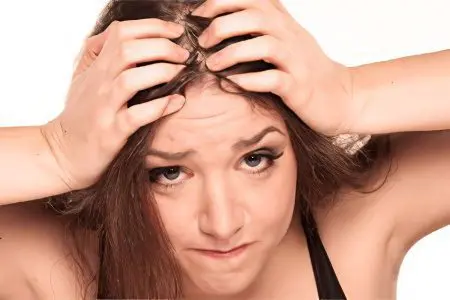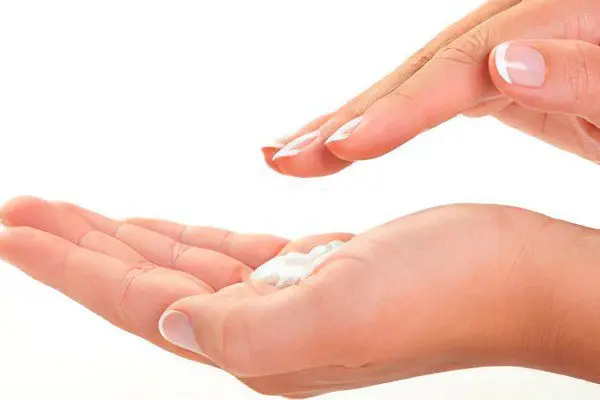Contents
What is seborrheic alopecia?
seborrheic alopecia – a kind of baldness caused by a painful condition of the scalp, namely, hyperfunction of the sebaceous glands. Their activity is disrupted as a result of malfunctions in the neuroendocrine and nervous systems. There is evidence that this type of alopecia is more common among the male population.
It should be understood that seborrhea does not always lead to hair loss. According to statistics, only a quarter of people with seborrhea will be affected by this pathology. In addition, there is an opinion that seborrhea is only an additional factor provocateur of baldness, but cannot be the only cause of hair loss.
It is customary to distinguish between oily and dry seborrhea. Each of them can become an indirect cause of alopecia. So, with insufficient production of fat, the scalp becomes more vulnerable to various kinds of damage. Hair thins, breaks and then falls out. When sebum production, on the contrary, is increased, this leads to the fact that dead cells of the epidermis are not able to be rejected normally, and fungi can begin to develop in places where they accumulate. It also leads to malnutrition of the hair shaft and hair loss.
Alopecia with seborrhea usually manifests itself during puberty and reaches its maximum clinical manifestations by the age of 25-35, of course, if there is no therapy.
Symptoms of seborrheic alopecia

Among the main symptoms of seborrheic type of alopecia are:
Itching that spreads all over the head;
The stratum corneum of the epidermis thickens;
An oily sheen appears on the hair and skin;
The skin begins to peel and peel off. The scales have a grayish-yellow color, can easily be separated from the surface of the head, even with a slight scraping. As a result, they are constantly found not only in the root zone of the hair, but also on the shoulders;
An unpleasant specific smell comes from the head;
There is profuse dandruff;
There is hair loss, but they do not fall out immediately, this is a gradual process;
The vessels expand, horny masses are deposited in the mouths of the hair follicles and cause their degenerative changes. As a result, this leads to the impossibility of producing new hair;
Dry seborrhea is manifested in the fact that the patient’s skin becomes thinner, becomes tender and sensitive to the slightest impact, there is a tendency to increased trauma. Dandruff is dry and fine;
Accession of eczema is a frequent concomitant symptom of seborrheic alopecia. This is a chronic skin lesion with characteristic rashes in the form of small nodules, which gradually transform into plaques.
The symptoms of seborrheic alopecia vary between men and women. In the male population, the peak of baldness occurs at 30 years. The hair thins in the fronto-parietal region, the remaining rods become thinner and dry. Baldness goes in the direction from the parietal zone to the frontal, or from the edges of the frontal part of the head towards the back of the head. In addition, there is evidence of a decrease in libido in some men against the background of existing seborrhea.
In women, seborrheic alopecia proceeds according to the diffuse type of alopecia. The hairline is lost gradually and evenly over the entire head. Most often, a decrease in estrogen levels is detected, and amenorrhea may be disturbing in parallel.
Causes of seborrheic alopecia
There are several reasons leading to the development of seborrheic alopecia, among them:
Hormonal changes in the body during puberty. It is this reason that determines the age at which the disease most often manifests. However, physiological seborrhea usually resolves on its own, in rare cases leading to alopecia;
Violation of the ratio of estrogens and androgens. Androgens, when their amount is excessive, stimulate the production of sebum. Most often, women with seborrheic alopecia have a lack of progesterone and estrogens and an increase in the content of androgens in the blood;
In men, an increase in androgen levels and the acceleration of their exchange also leads to baldness. Sometimes such a pathological process is caused by a tumor of the testicles;
Seborrheic alopecia can be caused by Parkinson’s disease, lethargic encephalitis;
Mental diseases can cause the problem to develop. For example, seborrheic alopecia is a frequent companion of people with schizophrenia, epilepsy, psychosis;
Taking certain medications may lead to the development of the disease. In this regard, the danger is long-term therapy with glucocorticosteroids, anabolics, vitamin H, hormonal drugs with testosterones and progesterones;
Pathological activity of yeast-like fungi, which are normally always present on the skin, can provoke the development of alopecia. At the same time, the fungi themselves are activated against the background of an exacerbation of chronic infections, during stress, and a decrease in immunity.
Treatment of seborrheic alopecia
After seborrhea has been identified as the cause leading to alopecia, it is necessary to start treatment. So, if the patient suffers from oily seborrhea, then already a day or even several hours after bathing, his hair becomes greasy again, so you have to wash your hair every day or every other day. For hygiene procedures, you should use special shampoos for oily hair and anti-dandruff. However, you should not wash your hair too often either, otherwise the hair rods will become even thinner, break and fall out.

Trichologists recommend that their patients periodically change the shampoo with which they wash their hair. The effect of oily seborrhea can be obtained through the use of medicinal solutions based on medicinal herbs containing ethyl alcohol. They are rubbed into the scalp. Perform the procedure twice a day in the morning and evening. If you do massage in parallel with rubbing, then this will be a good addition to the treatment of seborrheic alopecia, as it will saturate the hair follicles with oxygen due to blood flow. The course of treatment with such solutions is 5 days, then for two weeks the head is washed with medicated shampoo. Thus, it is worth treating the head for at least 8 weeks.
Sulfur, tar and salicylic acid are three components that should be included in shampoos for washing your hair with oily seborrhea. These substances can dry out oily skin and rid the hair of greasy shine.
As a means for oral administration, vitamin complexes are prescribed. It is important to follow an appropriate diet. So, you should exclude marinades, preservatives, salty and spicy foods from your menu. To achieve a therapeutic effect, it is worth limiting the intake of fats, this is especially true for saturated fats and carbohydrates that are easily digested (sugar, pastries, sweets and confectionery). Priority in this case is given to bran and foods rich in fiber.
In addition, in preparations for the local treatment of seborrhea, a component such as ketoconazole must be present. It is he who contributes to the irradiation of the fungus from the scalp, the remaining substances are only auxiliary in relation to the treatment of seborrhea. With its dry variety, keratins, proteins and amino acids should be included in the ketoconazole-based remedy.
Treatment of seborrheic alopecia with ketoconazole is advisable once or twice a week, depending on the severity of seborrhea. The rest of the time, therapy is carried out with the help of shampoo and solutions based on ethyl alcohol according to the above scheme.
Here is a list of other popular treatments for alopecia:
The best shampoo for hair restoration and growth
Medical treatment of alopecia (full list of drugs)
Minoxidil for hair loss
Finasteride for hair loss
Hair transplant: answers to basic questions
After you manage to get rid of the cause of alopecia, you can begin to stimulate hair growth. For this, it is recommended to use preparations based on Minoxidil. They reduce the amount of androgens and reduce their pathogenic effect on hair follicles. However, you should only use Minoxidil if your doctor recommends it. First, this tool has certain side effects. Secondly, after the elimination of the main problem in the form of seborrhea, seborrheic alopecia can not only stop, but also regress without any additional treatment.
It is important to use only a personal comb during and after therapy. When there is a fight against the disease, it can be additionally treated with any disinfectant solution, for example, Miramistin. You need to do this once a day.
If local treatment does not give the desired effect and seborrheic alopecia recurs, then it is worth looking for the cause in other organs and systems. So, baldness can be a consequence of endocrine pathology. In this case, the patient will need to take hormonal drugs.
Special attention deserves the treatment of oily seborrhea, leading to alopecia in young men. The most common cause of this pathological condition is an increase in the blood level of male sex hormones. Therefore, to treat this problem, drugs with female sex hormones are prescribed.
If alopecia is caused by dry seborrhea, then the patient is recommended to wash his head no more than once a week. It is also mandatory to use drugs that are part of the azole group. It can be ketoconazole or bifonazole. The choice should be made only after microscopic examination and bacterial culture. These tests will make it possible not only to determine the type of causative agent of seborrhea, but also the sensitivity of a particular fungus to the drug.
When problems with the ovaries are detected, a woman is often prescribed hormonal contraceptives.
The means aimed at the general strengthening of the body include vitamins of group B, A, D, E, ascorbic and nicotinic acid. Preparations of selenium, calcium, sulfur, copper, zinc are used. As for the diet for dry seborrhea, the patient must definitely include healthy polyunsaturated fats in the menu. These are various oils, nuts, fatty varieties of fish.
Despite the possibility of completely getting rid of seborrheic alopecia, the patient will need to follow preventive measures in the future. They boil down to maintaining a healthy lifestyle, eliminating junk food from the menu, and observing the regime of work and rest. Refusal of bad habits, timely treatment of all diseases and taking medications under medical supervision are also preventive measures to prevent the development of seborrheic alopecia.
The prognosis for this type of baldness is favorable, relapses occur if the treatment has not eliminated the true cause of the problem. In this case, a deeper diagnosis is required.
Author of the article: Herman Olga Leonidovna, trichologist, specially for the site ayzdorov.ru









